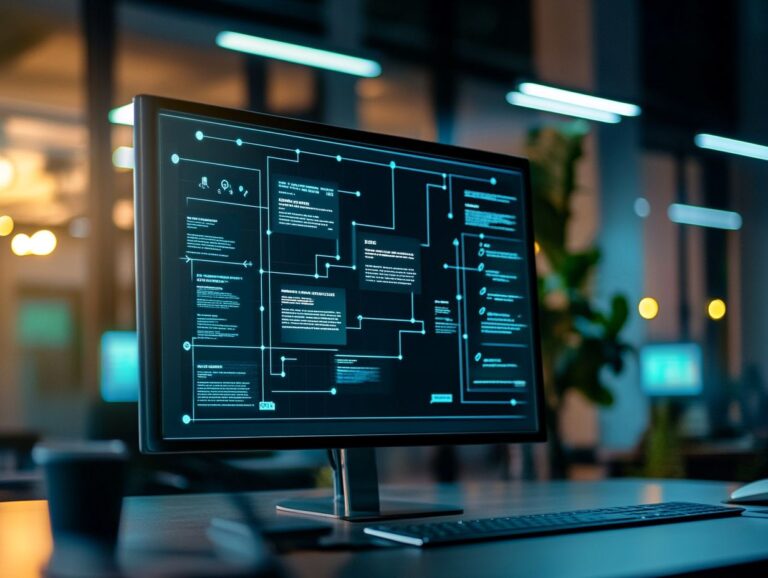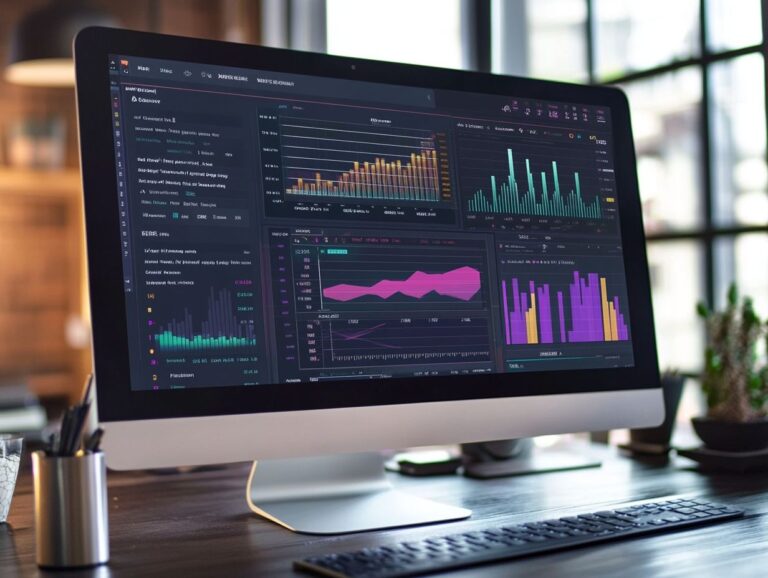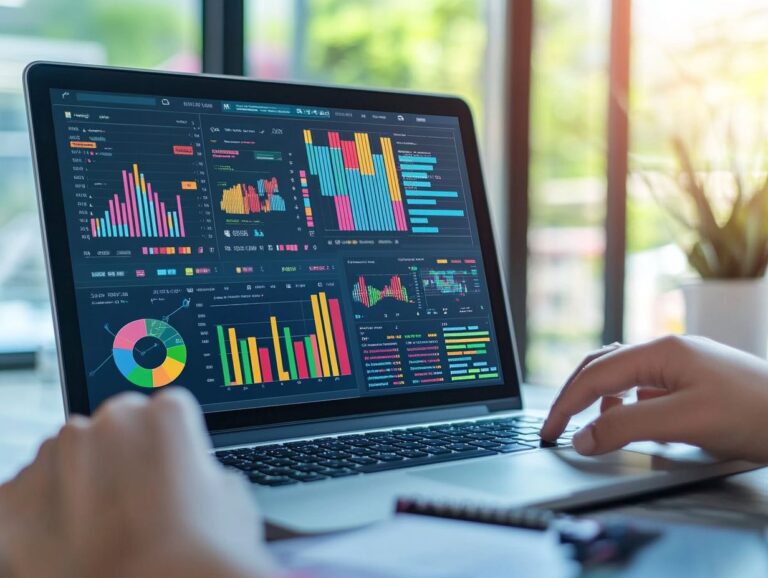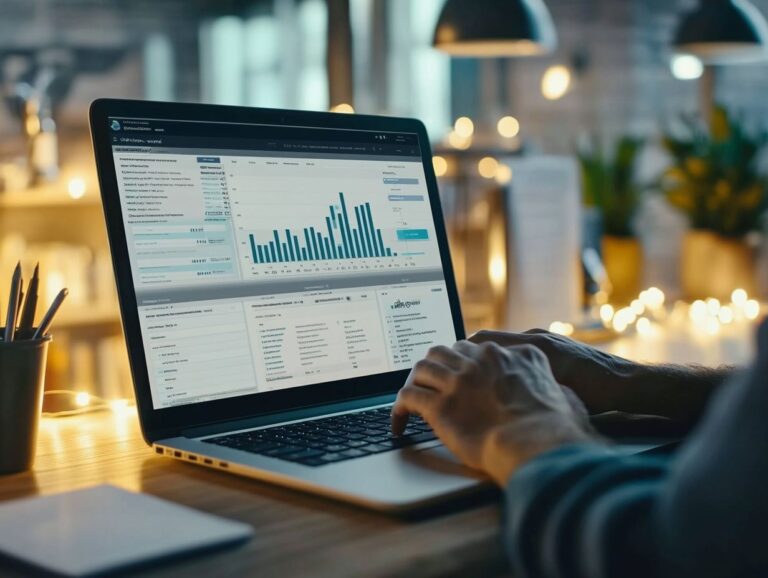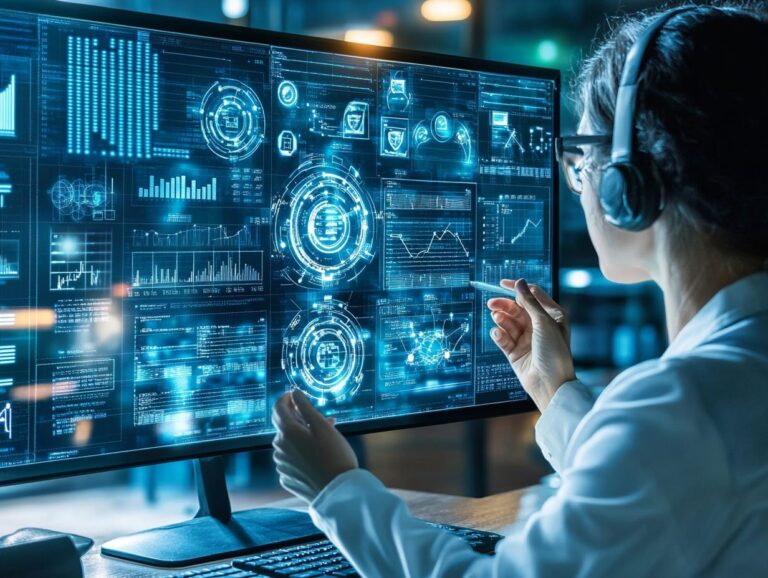AI for Image Optimization and Its SEO Benefits
In today s digital landscape, where visuals are paramount to user experience and engagement, you can t overlook the importance of optimizing images. This process not only enhances image quality but also boosts loading speeds, improves accessibility, and increases user interaction.
This article delves into the ways you can enhance image optimization, highlighting its substantial SEO benefits and various techniques you can employ. Whether you are a website owner or a digital marketer, discover how to achieve superior image performance and visibility.
Contents
- What is AI for Image Optimization?
- How Does AI Improve Image Optimization?
- What are the SEO Benefits of AI for Image Optimization?
- What Are the Different Types of AI Image Optimization Techniques?
- How Can AI Image Optimization Be Implemented on a Website?
- Frequently Asked Questions
- What is AI for image optimization and how does it benefit SEO?
- How does AI technology improve image compression for SEO?
- Can AI optimize images for different devices and screen sizes?
- How does AI determine the best alt tags for images?
- Can AI help choose the best image format for SEO?
- How can AI optimize images for local SEO?
What is AI for Image Optimization?
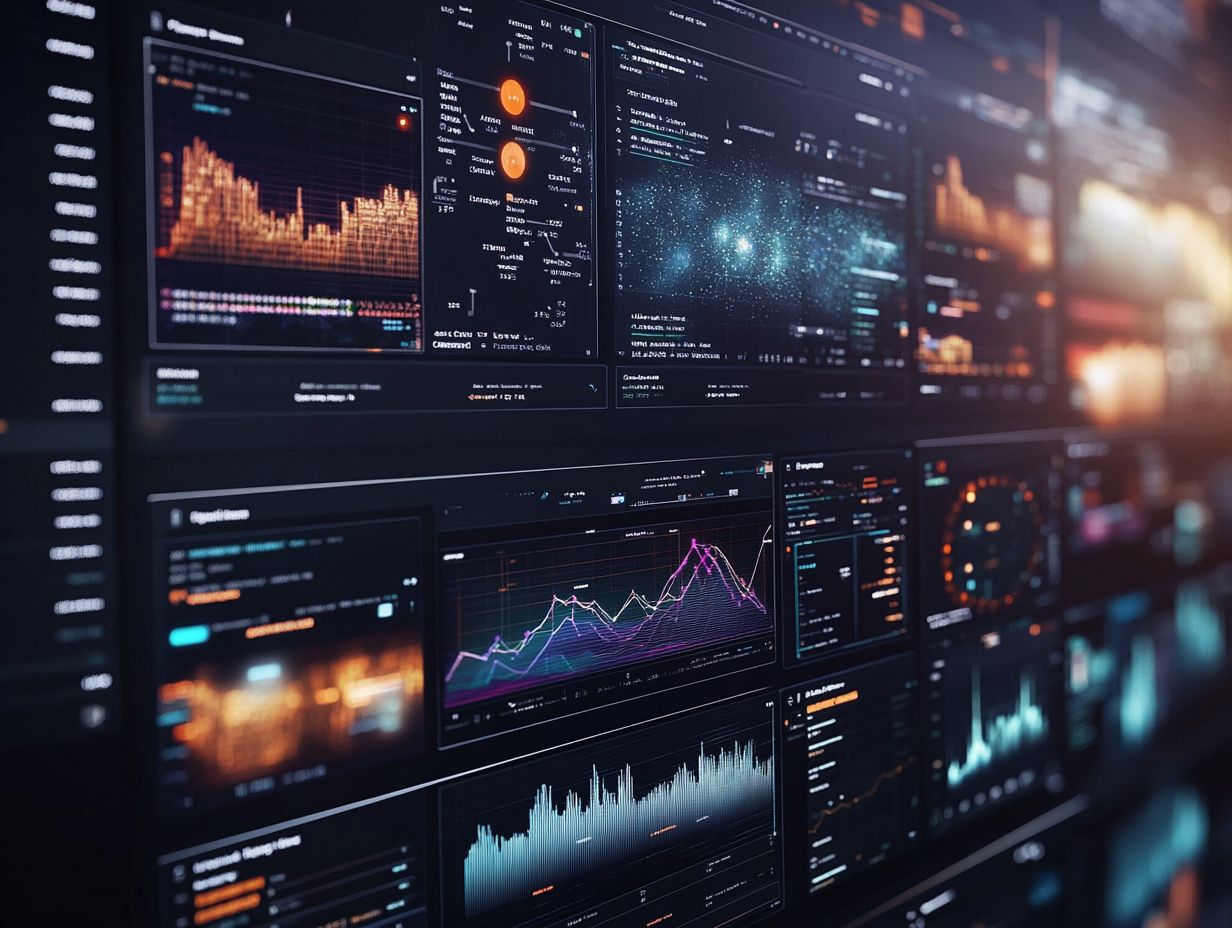
AI for image optimization involves leveraging the capabilities of artificial intelligence and machine learning to elevate the web performance of your visual content. By utilizing advanced algorithms, you can automate image compression, create responsive designs, and enhance loading times, leading to a seamless user experience.
This cutting-edge approach allows you to optimize image quality without sacrificing site speed, ultimately boosting your search rankings and enhancing user engagement.
How Does AI Improve Image Optimization?
AI elevates your image optimization strategy by harnessing advanced algorithms, neural networks, and deep learning techniques to meticulously analyze and enhance images, leading to superior performance and quality.
This cutting-edge technology offers automated editing, efficient image compression, and dynamic image generation, all of which culminate in faster loading times and visually optimized content.
Moreover, by interpreting user behavior and intent, AI-driven insights can tailor images for various platforms, significantly improving web accessibility and mobile optimization for your audience.
What are the SEO Benefits of AI for Image Optimization?
The SEO advantages of AI for image optimization are truly significant, enhancing your search rankings, boosting user engagement, and elevating your overall web performance.
By harnessing AI-driven image optimization techniques, you can improve image quality without compromising on loading times, which results in lower bounce rates and increased conversion rates.
Furthermore, AI can effortlessly generate alt text, image tags, and schema markup, making sure your images are not only accessible but also relevant for both users and search engines.
1. Faster Loading Times
Faster loading times stand out as a vital advantage of utilizing AI for image optimization, elevating both site speed and overall web performance. With AI tools on your side, you can compress images efficiently without compromising quality, ensuring users experience minimal delays when accessing visual content. This becomes especially critical for mobile optimization, where users have come to expect swift loading times on their devices.
Beyond enhancing user experiences, these quicker loading times also make a significant impact on your SEO performance. Search engines are known to favor websites that deliver fast load speeds, which can lead to better rankings and increased visibility.
Automated image compression and performance optimization techniques, such as lazy loading and adaptive image serving, further enhance web accessibility. These strategies ensure that all users, including those with slower connections, can navigate your site with ease.
By analyzing user behavior, you can pinpoint areas for improvement, optimizing not just images but the entire user journey. This thoughtful approach creates a seamless blend of aesthetics and functionality, enriching the overall experience for every visitor.
2. Better Image Quality
You can achieve better image quality through AI-powered image optimization, which harnesses advanced machine learning algorithms to elevate your visual content. These algorithms work intelligently to enhance brightness, sharpness, and color correction, ensuring your images are not only aesthetically pleasing but also aligned with user intent. This emphasis on quality not only enhances the user experience but also positively impacts your search rankings on image search engines.
AI techniques, like automated editing, streamline this process even further, allowing you to make quick adjustments without the hassle of extensive manual input. By analyzing various image attributes, this technology can detect imperfections and suggest enhancements, fostering greater user engagement with your content.
Moreover, these systems often include features for competitive analysis, enabling you to benchmark your visual strategies against industry standards. This ensures that your images stand out and attract more attention in an increasingly crowded digital marketplace.
3. Increased User Engagement
Increased user engagement is one of the hallmark benefits of effective AI-driven image optimization. When you present visually appealing content, you naturally attract more visitors and encourage them to interact. By harnessing dynamic image generation and the art of visual storytelling, your website can craft compelling experiences that truly resonate with your audience. This heightened engagement translates into improved bounce rates and elevated conversion rates.
When your audience encounters captivating visuals, they are far more inclined to share that content across their social media platforms, amplifying its reach and enhancing your brand’s visibility. Integrating interactive elements like polls or quizzes can deepen user involvement, creating a memorable experience that fosters loyalty and encourages repeat visits.
Website analytics then become your secret weapon, offering valuable insights into user behavior. This data allows for more precise audience targeting and the refinement of your content strategies. By understanding what drives engagement, you can tailor your visuals to meet the specific needs and preferences of your target demographic, ensuring that every interaction not only captivates but also converts.
4. Improved Accessibility for Users with Disabilities
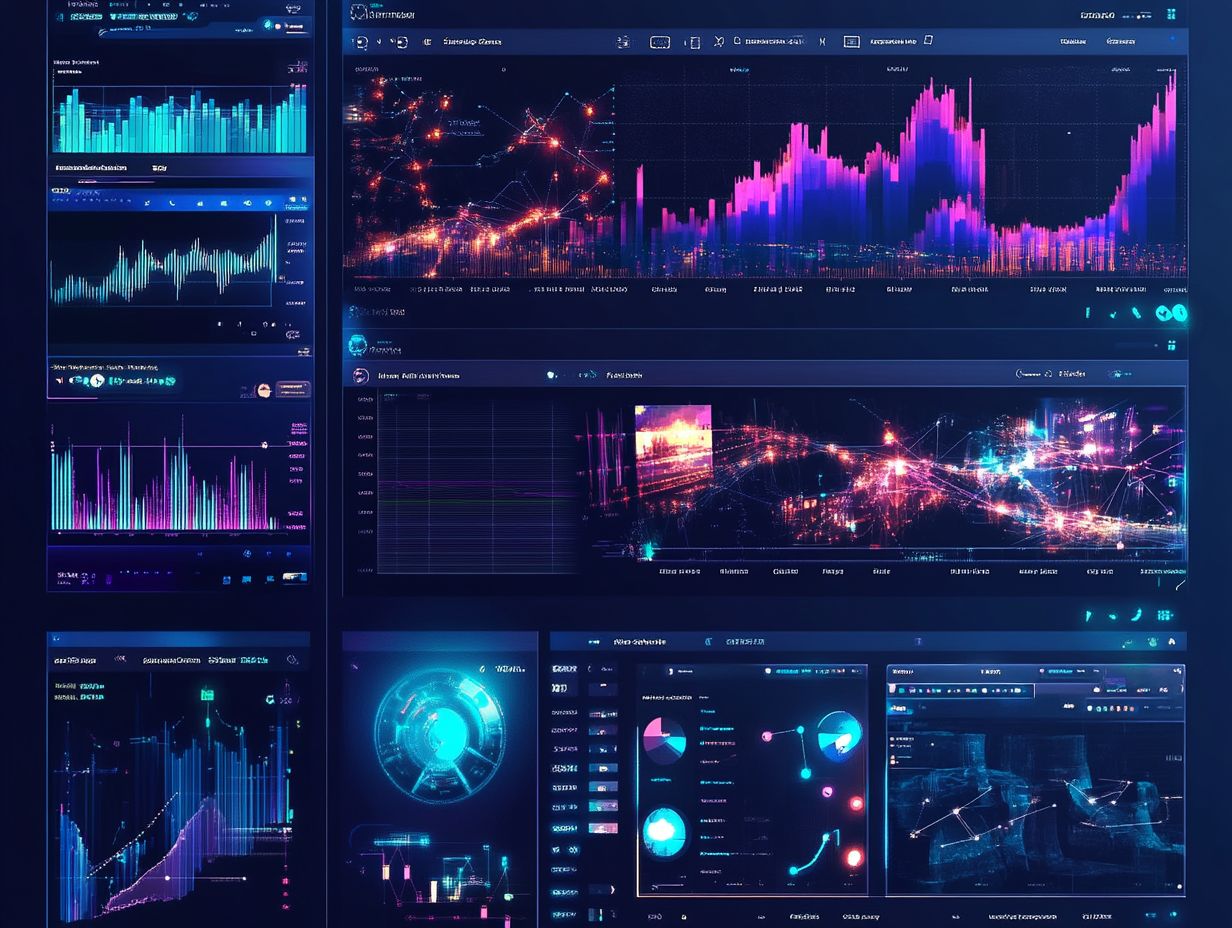
Improved accessibility for users with disabilities is a remarkable advantage of AI in image optimization, as it facilitates the automatic generation of alt text and optimized image attributes. By ensuring that every image is appropriately tagged and described, your website becomes significantly more user-friendly for those who rely on assistive technologies. This dedication to accessibility not only promotes inclusivity but also aligns seamlessly with best practices for SEO.
Web accessibility is essential for enhancing the overall user experience for diverse audiences. By utilizing AI-powered tools, you can ensure better compliance with web standards, making it easier for everyone to access information, regardless of their abilities.
Alt text is not just a descriptive element for images; it is a vital component for screen readers, allowing visually impaired users to engage fully with your content. Image attributes, such as file names and titles, further bolster this effort by providing context that enhances understanding.
Collectively, these elements contribute to a more equitable online environment, enabling all users to interact seamlessly with digital content.
5. Enhanced Mobile Optimization
Enhanced mobile optimization is absolutely crucial in today s digital landscape, and AI plays a vital role in ensuring your images are perfectly formatted and optimized for mobile devices. By applying responsive design principles and choosing the right image formats like JPEG, PNG, GIF, and SVG AI enables your images to load quickly while preserving visual quality across a variety of screen sizes.
This strategy not only elevates the user experience but also significantly boosts site speed, which is essential for keeping visitors engaged and optimizing conversions. When you utilize responsive design techniques, you ensure that your layouts adapt effortlessly to different devices. Furthermore, by strategically selecting image formats, you can cut down on load times without compromising quality.
By focusing on user-centric design elements that prioritize accessibility, you can enhance engagement, making it easier for users to navigate and interact with your website. In an era dominated by mobile traffic, integrating these optimization techniques is key to driving success and achieving higher conversion rates.
What Are the Different Types of AI Image Optimization Techniques?
You have a wealth of AI image optimization techniques at your disposal to elevate your visual content, each meticulously targeting specific elements of image management and quality.
These techniques encompass image compression, allowing you to reduce file sizes without compromising quality, along with image tagging and alt text generation that enhance your SEO efforts. Additionally, there are image enhancement processes powered by machine learning designed to elevate aesthetics.
Grasping these techniques is essential for effectively optimizing the visual content on your website.
1. Image Compression
Image compression is an essential technique you should embrace, driven by AI to reduce image file sizes while preserving their quality. This not only significantly enhances web performance but also ensures your images load quickly and efficiently, elevating user experience and boosting your search engine optimization efforts. A variety of algorithms and tools are at your disposal, making image compression a critical component of any image optimization strategy.
Among the plethora of tools available, online platforms like TinyPNG and JPEGmini employ smart algorithms to optimize images without sacrificing visual integrity. If you prefer a hands-on approach, software solutions like Adobe Photoshop and GIMP offer robust features for manual compression, enabling you to fine-tune quality and size to your liking.
For those of you in development, integrating AI-based plugins such as ImageKit or ShortPixel can automate the optimization process, striking a perfect balance between image quality and site speed.
Ultimately, harnessing these image optimization tools not only accelerates loading times but also enhances your overall site performance, paving the way for improved engagement and higher conversion rates.
2. Image Tagging and Alt Text Generation
Image tagging and alt text generation are essential elements of AI image optimization, enhancing both your SEO and accessibility efforts. With the power of AI, you can automatically analyze images and generate relevant tags and descriptions, ensuring that each one is indexed accurately by search engines. This not only elevates the user experience by providing valuable context but also improves the discoverability of images on search engine results pages (SERPs).
By harnessing automation, you can streamline the creation of metadata that aligns perfectly with user intent, ultimately boosting crawlability for search engines. As AI technology advances, it becomes adept at recognizing not just the objects and themes within images, but also their broader context an essential aspect for effective tagging.
This heightened accuracy translates to increased engagement rates, as users are more likely to stumble upon images that truly resonate with their search queries. In the end, utilizing automated image tagging and alt text generation not only enhances your SEO strategy but also significantly improves web accessibility, ensuring that your content is readily available to all users, including those utilizing screen readers or other assistive technologies.
3. Image Enhancement and Retouching
AI-powered image enhancement and retouching techniques offer you the ability to elevate your visuals seamlessly, ensuring every image is polished and professional. With these advanced algorithms at your disposal, you can effortlessly adjust brightness, contrast, and sharpness, producing images that not only captivate but also maintain brand consistency. Enhanced visuals not only drive user engagement but can significantly improve your overall site performance.
These AI technologies simplify the creative process for graphic designers like you, allowing for powerful visual storytelling to shine through. By automating tedious tasks such as blemish removal and color correction, you can dedicate your energy to refining concepts and realizing your creative visions, free from the burden of repetitive work. This approach boosts your productivity and provides a competitive edge in a crowded market where high-quality visuals are essential.
As a result, you can effectively analyze your image strategies, leading to a more engaging online presence that ultimately drives conversions.
4. Image SEO Analysis and Optimization

Image SEO analysis and optimization require your attention to detail as you assess and enhance images, ensuring they align with the best practices for search engine visibility. Utilizing AI tools allows you to analyze various attributes like file names, alt attributes, and image formats providing you with actionable insights to refine your optimization strategies. By taking this proactive approach, you can achieve better indexing and visibility on image search engines, ultimately increasing your organic traffic.
Focusing on these elements enables you to effectively improve your placement in search results. By leveraging optimization strategies such as keyword-rich file names, descriptive alt text, and appropriately sized images, you can enhance performance metrics like click-through rates and user engagement.
Employing tools like Google Image Search Console, Screaming Frog, or Adobe’s image optimization features will help you track these metrics, enableing you to develop a data-driven content strategy. In the end, executing a thorough image SEO analysis not only elevates the user experience but also reinforces your website’s overall visibility and accessibility, drawing more visitors over time.
How Can AI Image Optimization Be Implemented on a Website?
Implementing AI image optimization on your website can substantially elevate its performance and enhance user experience through a variety of sophisticated methods and tools.
Whether you choose AI-driven image optimization tools, seamlessly integrate AI into your current processes, or engage specialized services, each option carries its unique benefits.
By discerning the best implementation strategy tailored to your needs, you ll achieve superior visual content management and witness improved search rankings.
1. Using AI Image Optimization Tools
Utilizing AI image optimization tools is an exceptionally effective strategy for automating and streamlining the image optimization process on your website. These advanced algorithms work diligently to analyze, compress, and optimize your images, enhancing performance while ensuring that loading times are minimized without compromising on image quality. With a wide array of options at your disposal, you can choose the tools that align perfectly with your specific needs.
Among the most favored choices are tools like TinyPNG and ImageOptim, which excel at reducing file sizes while preserving visual integrity across various formats. Additionally, platforms such as Adobe Photoshop s AI-driven features and Google s WebP format provide intelligent solutions tailored specifically for web environments.
By integrating these automated editing and optimization tools into your workflow, you ll significantly elevate the user experience, resulting in quicker load times and reduced bounce rates. This approach leads to heightened engagement levels and improved search engine rankings, ultimately enhancing your online presence and audience retention.
2. Integrating AI into Existing Image Optimization Processes
Integrating AI into your existing image optimization processes can significantly enhance both efficiency and effectiveness, enableing you to make data-driven decisions that elevate your overall web performance. By taking a close look at your current workflows and pinpointing where AI can contribute value, you can streamline image management and consistently improve quality. This integration not only optimizes your images but also harmonizes with your broader content marketing strategies.
A comprehensive assessment of your existing image optimization methods should include a thorough evaluation of performance metrics such as load times, bounce rates, and user engagement levels. Once you have established these baseline measures, you can strategically introduce AI tools that automate tasks like resizing, compressing, and formatting images in real-time.
Leveraging AI enables you to deliver personalized content, ensuring that your images resonate deeply with your target audiences. By continuously monitoring and optimizing based on performance metrics, you will not only enhance user experience but also cultivate a stronger connection through compelling and relevant visual storytelling.
3. Hiring an AI Image Optimization Service
Hiring an AI image optimization service enables your website with specialized expertise and resources designed to fully harness the advantages of AI-driven image management. These services are equipped with advanced tools and a profound understanding of optimization techniques, allowing them to enhance image quality, improve loading times, and elevate user experience with remarkable efficiency. This investment can yield substantial returns in engagement and search rankings.
By leveraging these specialized capabilities, you not only enhance your visual content but also gain valuable insights into competitive analysis and user behavior. Understanding how audiences interact with images enables you to make strategic adjustments that drive higher conversion rates. These services remain attuned to the latest trends in conversion optimization, ensuring that the images you use resonate perfectly with your target demographic.
Ultimately, engaging a specialized AI image optimization service means making informed decisions that lead to meaningful results, significantly enhancing both your brand presence and customer satisfaction.
Frequently Asked Questions
What is AI for image optimization and how does it benefit SEO?

AI for image optimization refers to the use of artificial intelligence technology to enhance images for better web performance. This includes compressing images, adding alt tags, and choosing the optimal image format for SEO. The use of AI for image optimization can improve website loading speed, increase visibility in search engines, and ultimately boost SEO rankings.
How does AI technology improve image compression for SEO?
AI technology uses algorithms to analyze images and reduce their file size without compromising image quality. This is crucial for SEO as large image files can slow down website loading speed, negatively impacting user experience and SEO rankings. With AI, images can be compressed to their smallest size possible, improving website performance and SEO.
Can AI optimize images for different devices and screen sizes?
Yes, AI technology can optimize images for different devices and screen sizes. With responsive design becoming increasingly important for SEO, AI can automatically adjust image sizes and formats to fit different devices, ensuring a consistent and optimized user experience. This can also help improve SEO rankings by providing a positive user experience for all visitors.
AI uses image recognition and natural language processing to analyze images and determine the most relevant and descriptive alt tags. This is important for SEO as alt tags help search engines understand the context of images, making them more likely to show up in relevant search results. With AI, alt tags can be optimized for both search engines and visually impaired users.
Can AI help choose the best image format for SEO?
Yes, AI can analyze images and determine the best format to use for SEO, which may vary based on the image content and website performance needs. For example, AI may recommend using JPEG for photographs and PNG for graphics with transparent backgrounds. Choosing the right image format is essential for SEO, as it can impact page loading speed and user experience.
How can AI optimize images for local SEO?
AI can use geotagging and location data to optimize images for local SEO. This includes adding location-specific alt tags and filenames, as well as optimizing image sizes for faster loading on mobile devices. With AI, images can be tailored to specific locations, making them more likely to show up in local search results and improving SEO for businesses targeting a specific geographic area.

